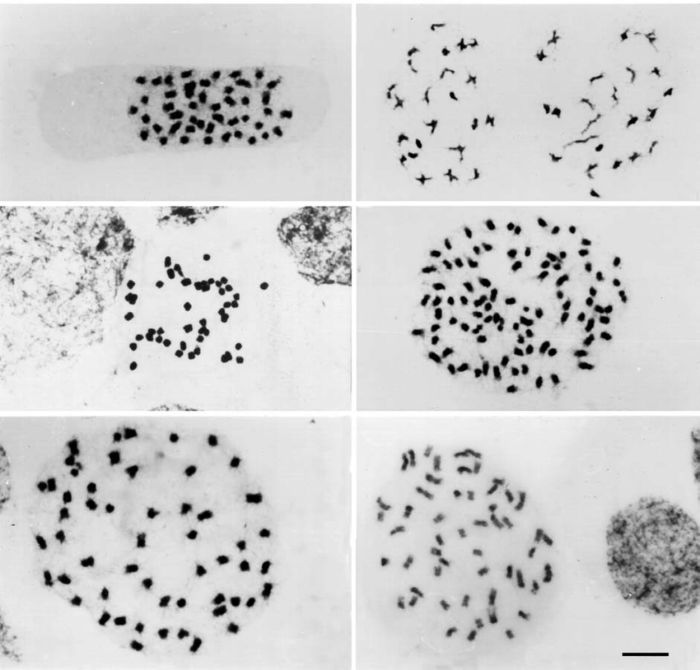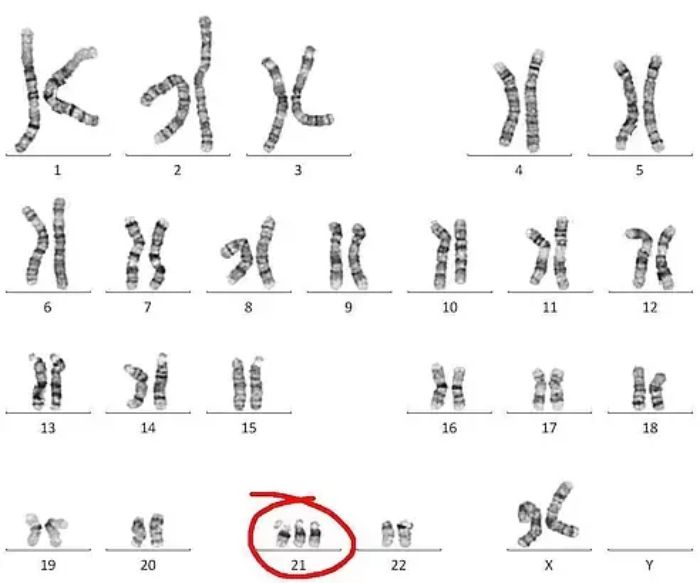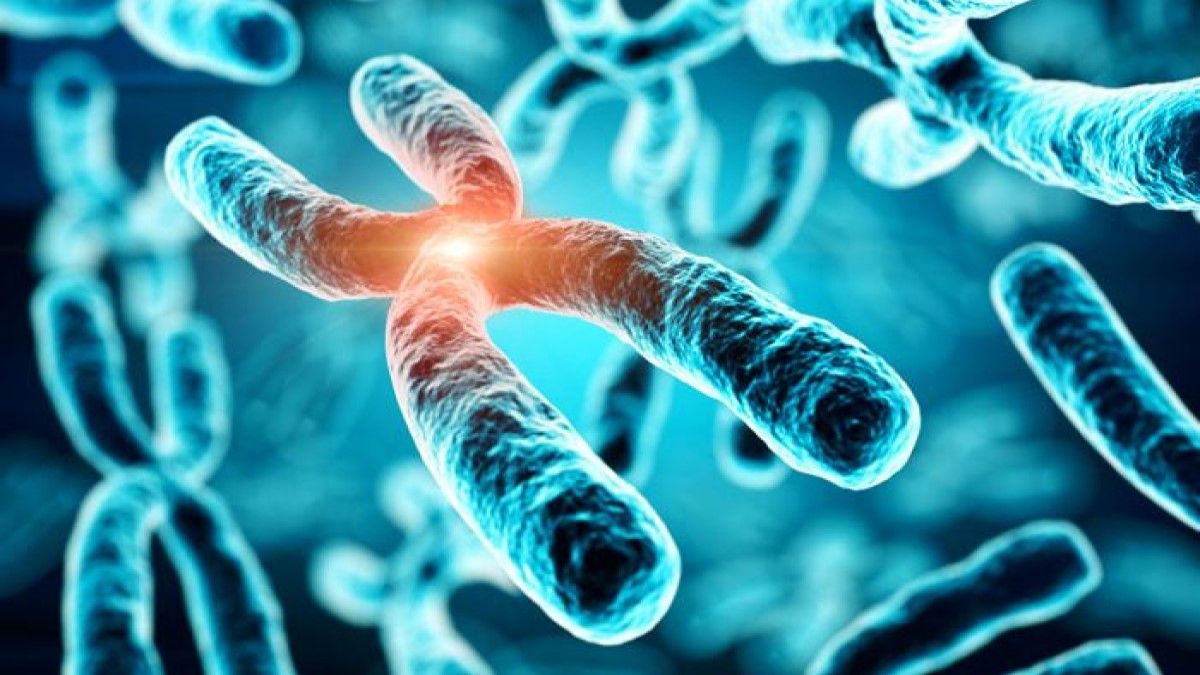A chromosome is known as a cell component that is made up of DNA. Chromosomes reside in the cell nucleus. DNA chromosomes are covered by histone proteins and chromatin loops. Because they are so long and this is the only way to fit them in a cell. Our DNA consists of thousands of genes that determine the traits of a person. This includes gender and hereditary features such as freckles or eye color. Below are the most interesting facts you can learn about chromosomes:
- Circular chromosomes of bacteria
- Organisms have a different amount of chromosome numbers
- Which chromosome is bigger, X or Y?
- Chromosomes that determine the gender
- Types of chromosome mutations
- Chromosome telomeres: aging and cancer
- There is viral DNA in human chromosomes
- Do all organisms have sex chromosomes?
- When a cell does not repair the damaged chromosome?
- Higher X chromosome activity in males
Circular chromosomes of bacteria
Eukaryotic cells have linear strands of chromosomes. However, the chromosomes of prokaryotic cells, like bacteria, are single circular chromosomes. Prokaryotic cells do not have a nucleus. Thus, the circular chromosome resides in the cell cytoplasm.
Organisms have a different amount of chromosome numbers

There are different numbers of chromosomes in every organism’s cells. This number changes according to the species and is usually between 10 to 50 chromosomes per cell. Diploid human cells typically have 46 chromosomes (44 autosomes, 2 sex chromosomes). This is 38 for a cat, 24 for a 24, 48 for a gorilla, 38 for a cheetah, 36 for a starfish, 208 for a king crab, shrimp 254, mosquito 6, turkey 82, and frog 26. Interestingly, orchid plants have chromosome numbers ranging from 10 to 250, according to the species. However, the most interesting is Ophioglossum reticulatum; because it has the most total chromosomes with 1260.
Which chromosome is bigger, X or Y?
Y chromosomes are about one-third of X chromosomes. The X chromosome factors in 5 percent of the size of a DNA molecule, while the Y chromosome in similar cells factors in roughly 2 percent of the cell DNA.
Chromosomes that determine the gender
Humans have male gametes or sperm cells, and these are used to determine the gender of a baby or any other mammal. These sex chromosomes are called X or Y. Female gametes or eggs only have X chromosomes. When a sperm cell with an X chromosome fertilizes an egg, the resulting zygote will be XX or female, in other words. When the sperm cell has a Y chromosome, the resulting zygote will be XY or male.
Types of chromosome mutations

Chromosome mutations happen occasionally. Some mutations make changes in the chromosome structure, while other mutations directly alter the chromosome numbers. Structural changes include gene deletion, gene duplication (chromosome extra), and gene inversion. The other mutation happens during meiosis, and the resulting number of chromosomes is either too many or less than normal. When a person has more than two extra chromosomes (chromosome extra), he or she is diagnosed with Down syndrome or trisomy 21.
Chromosome telomeres: aging and cancer
Each telomere is located at the tip of a chromosome. Telomeres protect DNA during the replication of a cell. However, telomeres wear and lose their length over time. If this process makes them too short, the cell cannot divide. Scientists believe that the shortening eventually causes the programmed death of the cell, also known as apoptosis. As you can probably guess by now, this is directly related to aging as well as cancer development in some cases.
There is viral DNA in human chromosomes
Every human’s DNA forms from a virus. However, this percentage is relatively small—roughly 8 percent. Researchers determined this virus and called it the Borna virus. There are diseases named for this virus, and they infect the neurons of birds such as parrots and mammals such as us. The final infection happens in the brain. The reproduction of Borna viruses happens in the infected cell nucleus.
These viral genes can be transferred to a cell chromosome. Thus, viral DNA passes from parent to child. Some mental health illnesses, like psychiatric or neurological ones seen in humans, are believed to be based on the Borna virus.
Do all organisms have sex chromosomes?
No, not all of them have sex chromosomes. For instance, ants, bees, and wasps are some of the species that don’t have a sex chromosome. Thus, sexuality is determined by fertilization. When the egg is fertilized, it will be a male, when it is not fertilized, there will be a female. Parthenogenesis is a type of asexual reproduction.
When a cell does not repair the damaged chromosome?
Throughout mitosis or cell division, cells do not want to repair a damaged chromosome. Our cells cannot distinguish a DNA strand damage, and telomere during the division. Otherwise, it would result in a telomere fusion, if cells chose to repair DNA in the mitosis stage. This may end up with a dead cell or aberrations in chromosomes.
Higher X chromosome activity in males
Since males live with a single X chromosome, cells tend to increase gene activity in the X chromosome. MSL complex is a protein complex, and it provides the RNA polymerase II enzyme with information for transcribing DNA and expressing more of the X chromosome genes. Because RNA polymerase II progresses further in the DNA strand during transcription thanks to the MSL complex, this allows more genes to be expressed.


